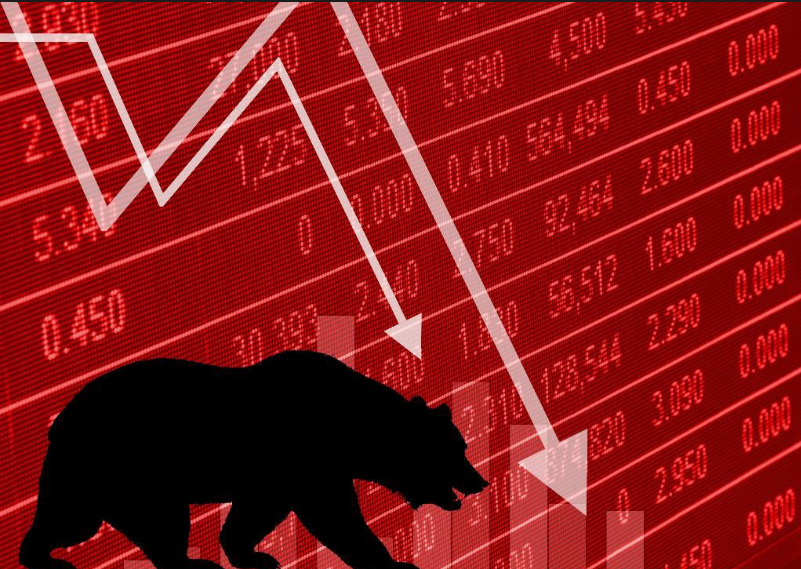I have received multiple phone calls and emails from concerned clients regarding the bear market we find ourselves in. A ‘bear market’ is defined as a loss greater than 20%. Many people are concerned about our government leadership, high inflation, and recession (and with good reason). However, this bear market is nothing like we saw in 2008-2009 when the S&P 500 dropped about 53%.
The 2008-2009 bear market was triggered by a real estate crisis and prompted never before seen bailouts by government entities to the private sector. The risks that many financial institutions took on were excessive and threatened a collapse of our entire economic system. Right now just seems to be the end of the longest bull market in stock market history and a typical recession partially created by the government flooding the US with money and having an energy policy designed to push people into ‘green’ energy.
The overall stock market has been falling since the start of the year, so it has already been six months of a declining stock market. When looking historically at recessions and stock market performance, the average number of calendar days for a pullback during a recession is 381 and the average loss is 32% (https://www.tker.co/p/stock-market-performance-recessions). But averages can be wildly misleading as several pullbacks were short and some were way longer. In my opinion, stock market downturns are decreasing in length as technology has sped up the process. I remember 2000-2003 when the market fell and that was a 929 day pullback. Then the 2008-2009 pullback was 517 days. Then the COVID downturn, which was just a 33 day pullback (and a loss of 34% in the S&P 500).
With high inflation, the Federal Reserve is raising interest rates, which creates a problem for the fixed income and/or bond allocation for investors. Bond prices move inverse to interest rates. So when rates rise, bond prices fall. Normally, when the stock market crashes, people buy bonds and push the prices up and yields down, but the Federal Reserve has raised rates so aggressively, that bond prices are suffering. If you look at the iShares Core US Aggregate Bond ETF (AGG), it is down over 11% this year at the time of this article. So stocks are down and bonds are down, while gas prices, rent, new mortgages, and food costs are all up. Our economy is largely consumer driven, so I fully expect a recession to be announced before the end of the year as people, in general, have less disposable income. However, by the time a recession is announced the stock market usually has already had a large downturn.
So where do we go from here? Some good news is that the S&P 500 is not very overvalued at the moment. The current P/E ratio of the S&P 500 is 19 (https://www.multpl.com/s-p-500-pe-ratio) and the long term average is 15.97. So stock prices are not too far ahead of earnings. This could change as earnings come in from corporations in the next few months, but we do not have a highly overvalued market. Also, mid term elections are this year and historically, the stock market outperforms after the elections are over (https://www.usbank.com/investing/financial-perspectives/market-news/stock-market-performance-after-midterm-elections.html). Here is a quote from that article:
“The S&P 500 has historically outperformed the market in the 12-month period after a midterm election, with an average return of 16.3%. This is especially true for the one- and three-month periods following midterm elections, which historically have significantly outperformed years with no midterm election.”
Of course, past performance is no guarantee of future results, but there could be some hope. Plus, the bad news is already out there. Everyone is expecting inflation, the bond market is predicting interest rate increases and adjusting, the war in Ukraine is ongoing, and the S&P 500 has fallen 21.6% and the tech heavy NASDAQ has fallen 30.2% (as of 6/22/22).
Based on all this, I do not believe this is a time to panic and move everything to cash. This market has been very volatile and could move up quickly as we have had several trading days with 2%+ upswings. The problem I see with clients who try to time the market is the question of when to get back in. Typically, I find people only feel comfortable buying back in when the market has been up for a while and they miss the recovery. I once had a fellow financial advisor tell me, “The stock market is the only thing I can think of where people don’t want to shop when everything is on sale!” Right now, the stock market has some discounted prices. We might get to clearance prices, but regardless, there will be a time when everything is at full price again!


